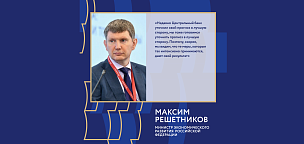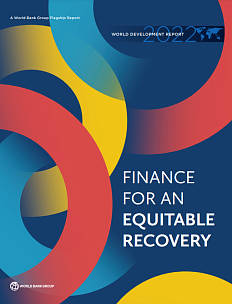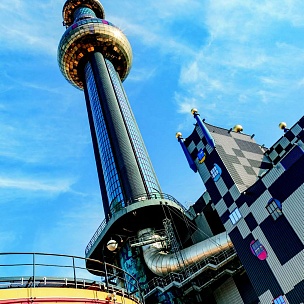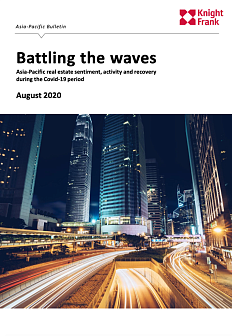In the beginning of 2019 the Strategy o t of the Russian Federation up to 2025 was approved. The explanatory note to this crucial document specifies that the Strategys goals are to ensure sustainable and balanced spatial development of the Russian Federation. Similar words are heard in the main topic of SPIEF 2019: Creating a Sustainable Development Agenda. The coincidence is not by chance. In todays world, it is the infrastructure transport, energy, digital that determines the rate of economic growth and effectiveness of inter-country cooperation. As early as March, the backbone Russian transport companies responded to the state strategy with their own ones. Russias air carrier number one adopted the new 100 by 100 strategy targeting 100 million passengers by the 100th anniversary of Aeroflot in 2023. In turn, Russian Railways prepared a long-term development programme (LDP) up to 2025. The goals stated in both documents are more than ambitious.

Construction of the Trans-Siberian Railway cost the Russian Empire RUB 1.5 bln An ancient postcard depicts the bridge over the Yenisei River
To avoid a bottleneck
Although sea shipping remains the cheapest way to get goods from point A to point B, railways allow for much faster delivery. And the difference in the price of a single unit of goods is not too great. So, according to estimates by RMA Logistics transport and logistics company, delivery of, for example, a pair of shoes by plane will cost about USD 5, by sea about 30 cents, and by rail only 5 cents more.
As a result, there is a growing demand for Russian land routes from Japan, Korea and China, as evidenced in particular by the growing volume of container traffic (in 2018, it rose by almost 15%, to 4.44 TEU) and the outstanding performance of transcontinental operators (the two biggest carriers, Federal Freight Company and Freight One, saw their profits go up by more than 30%).
Of all the possible options proposed by China, the One Belt, One Road initiative fully exploits only the route through Russia. It can and should be improved and accelerated, which depends directly on the condition of Russian railways and their long-term development programme. The visible prospect is 2025: this is the period for which reliable forecasts can be made with regard to global economic situation.
The main trends in transport are quantitative growth of Russian exports and an increase in transit. The global task of RZD in this case is to ensure that it is growing faster than other sectors of the economy in order to avoid becoming a bottleneck hindering the growth of the Russian economy. The latter, by the way, should be among the worlds five biggest in terms of purchasing power parity. By 2025, Russian railways are expected to generate 10% of annual GDP growth, thus helping it to increase by 50% per capita.
The long-term development programme envisages two scenarios basic and optimistic ones, corresponding to growth rates based on the forecast by the Ministry for Economic Development. The baseline scenario assumes a total public investment of RUB 4.7 trn. At all stages, the opportunities for public-private partnership are taken into account. Considering the external RUB 4 trn, investments will total RUB 8.7 trn by 2025.
If the economy switches to the optimistic scenario, which implies growth of 33.5% a year, the state will allocate RUB 5.8 trn for developing the railways. So the programme as a whole will cost RUB 9.8 trn.
Geography of the future
The biggest and most high-profile project is the reconstruction of the Baikal-Amur Mainline and the Trans-Siberian Railway. It not only provides export opportunities for East Siberian companies. The Baikal-Amur Mainline and the Trans-Siberian Railway clamp the Russian state together with steel threads. Fast and convenient transport accessibility makes the nation unified and indivisible. Big and small businesses in this area number in the hundreds. They provide employment and financial stability for dozens of Russian regions.
The second but no less important trend is development of the infrastructure in the direction of the ports of the North-West, the Azov and Black Seas. A real example is the Caspian Sea direction. Special economic areas will appear at the ports of Olya (Astrakhan Region) and Kaspiysk (Republic of Dagestan) to provide the basis for major logistics hubs receiving cargo from India, Iran, China, South-East Asia, Africa and the Middle East. Such a route will be 20 30% cheaper than transporting through the Suez Canal. As a result, the annual cargo turnover of Russian ports on the Caspian Sea will grow up to 30 million tonnes in the first stages. About RUB 30 bn will be invested by the state simultaneously, while another RUB 90 bn will come from private investors.
Ports windows to Europe and the Mediterranean are in private hands. The task of RZD is to prevent cargoes from getting stuck on the approaches to transshipment points. The state monopolys investment will provide higher profit margins for companies investing in developing ports and infrastructure.
A separate clause in the long-term development programme is devoted to construction of the Northern Latitudinal Railway. This is not just a railway project: it involves the Northern Sea Route and Arctic ports. So far, the cargo capacity is set at 80 million tonnes but Rosatom Head Alexey Likhachev has already made an increased commitment of 92 million tonnes. The Northern Sea Route is to be provided with an appropriate cargo base, which is impossible that without railways.
Apart from long routes, problems related to the comprehensive development of the Moscow, Perm and Saratov transport hubs need to be addressed. They may become bottlenecks slowing down the global modernization process.
Finally, the long-term development programme approves construction of high-speed railways, an area in which Russia will need to play catch-up. The high-speed railway between Moscow and St. Petersburg will be first according to the plan. This means more than just cutting travel time to two hours between the capitals. It also implies technology trial runs, construction of new infrastructure and development of Russian machine-building enterprises, which will become the main suppliers for domestic high-speed railways. In this respect, Tatarstans President Rustam Minnikhanov has rightly noted that the postponed MoscowKazan railway would, sooner or later, be built. The rapidly developing Eurasia corridor will provide this route with the requisite numbers o passengers and quantities of freight.

Russia unites Eurasian space not only by transport corridors. The summits set a new line of development for bilateral ties. Russian President Vladimir Putin and North Korean leader Kim Jong-Un during an official meeting, 25 April 2019, Vladivostok
Going digitalDevelopment of the railways is directly linked to an increase in labour productivity (according to the programme, by at least 5% a year), with a significant expansion of digital technologies and automation of processes. Digitalization is not just about shipping wagons and containers, which speeds up customs clearance and cargo tracking, but also about mobile applications that enable thousands of wagons to be managed online. Big steps have been made in this direction by domestic IT developers, who will be given preference.
Yet the long-term development programme is more than merely a bunch of plans. Megaprojects in no way cancel out the daily work on the reduction of kilometres, on conducting overdue overhaul and renewing the fleet with advanced locomotives.

David Bowie discovered Russian transit back in the 1970s
Aviation will support from the air
Aeroflot transported 50.1 million passengers in 2017 (at time of going to press, the data for 2018 had not yet been made public). So, over the next five years, passenger traffic should double. What is behind this?
The key drivers will be Pobeda Airlines (its share in the groups transport structure will grow to almost a third), transit passenger traffic and creation of regional bases in Sochi, Ekaterinburg and Novosibirsk, as well as an international hub in Krasnoyarsk, which will provide conditions for boosting regional traffic.
Among the listed tasks, the most interesting in terms of developing transport corridors in the vast Eurasian space is to scale up the number of transit passengers from todays 5 million to 1015 million a year. Aeroflot has already learned how to make convenient connecting flights with China and the Asian region as a whole. Its flights are up to three hours shorter than those of its rivals and, in the number of destinations, the airline occupies the first place in terms of traffic volume between China and major European cities.
Inbound tourism also contributes. According to the World without Borders Association, the number of Chinese tourists arriving in Russia on a visa-free basis (for group travel) has doubled since 2015, reaching 1.1 million. Chinese citizens travel to Moscow and St. Petersburg both specifically and as part of a longer journey, such as on their way to Europe. Big data analysis systems and automation of many processes have already allowed Aeroflot to reduce the route turnaround of an aircraft at the airport from one and a half hours to 4045 minutes, and to boost the quality of customer service. As part of Aeroflots strategy, 200 Russian Superjet 100 and MC-21 aircraft are to be put into service.
Combining strategic and tactical goals, Russian transport companies will become drivers and guarantors of national economic development, leading players in global transport logistics.

Sochi airport will be one of Aeroflots regional bases










